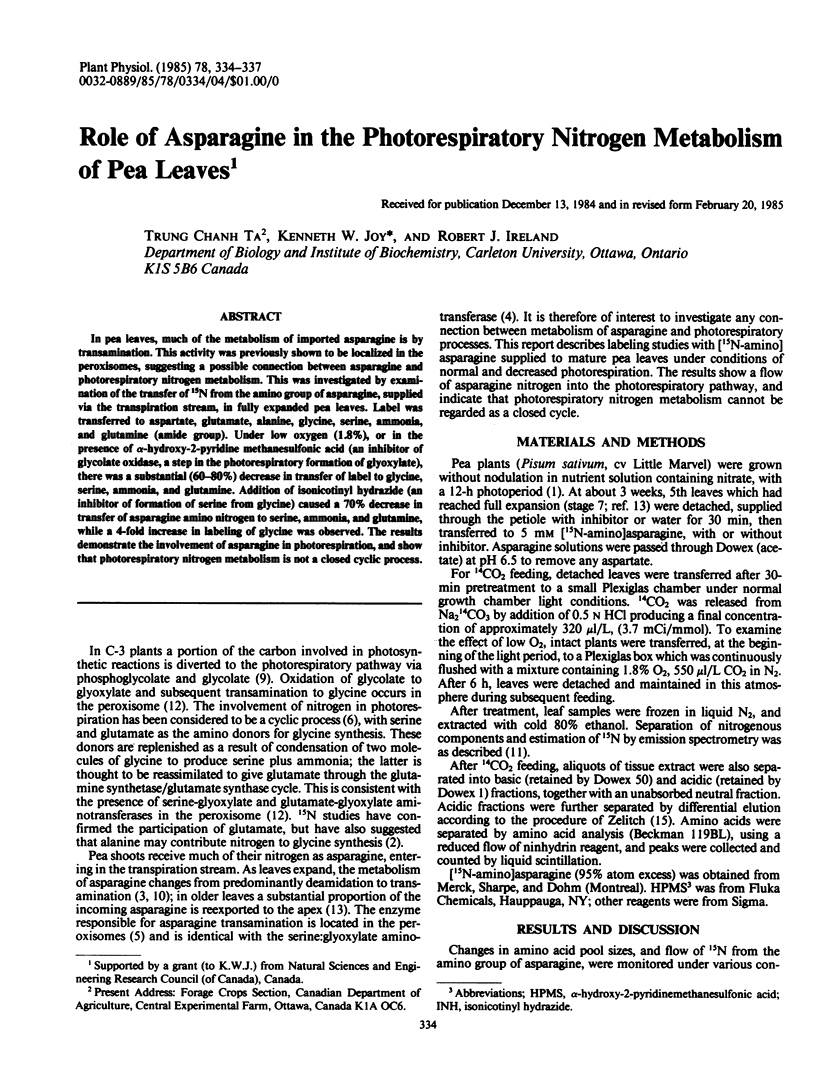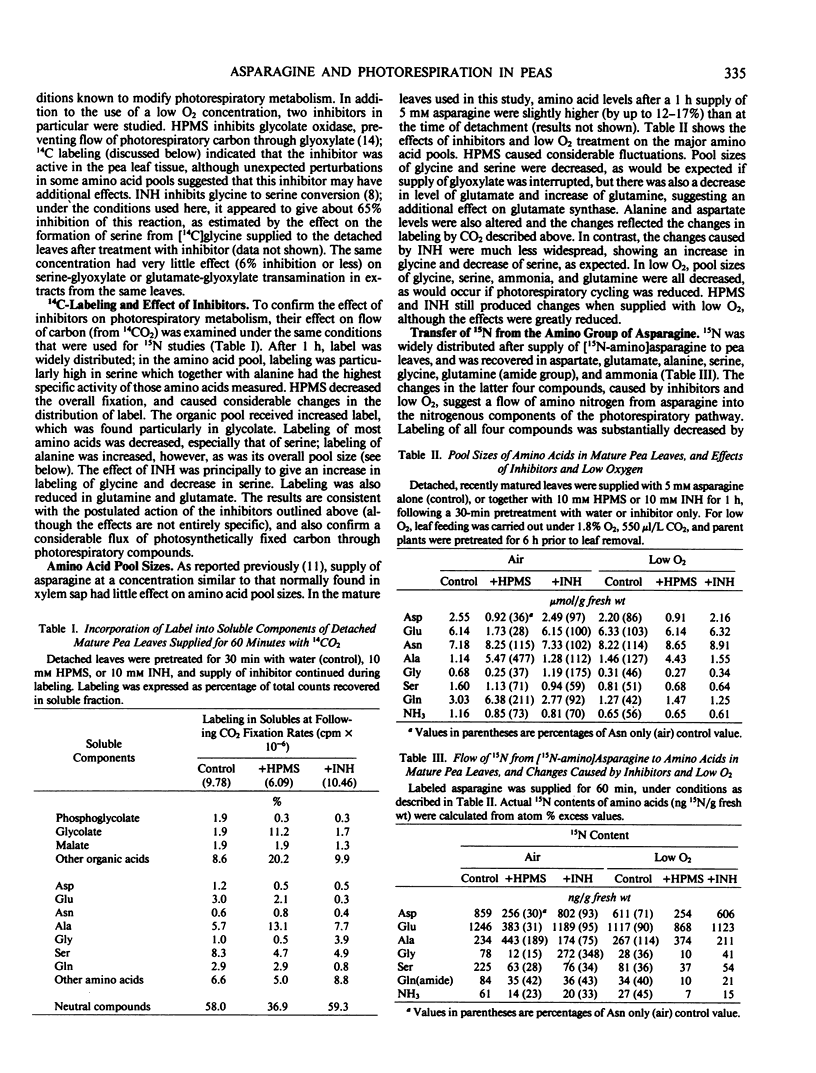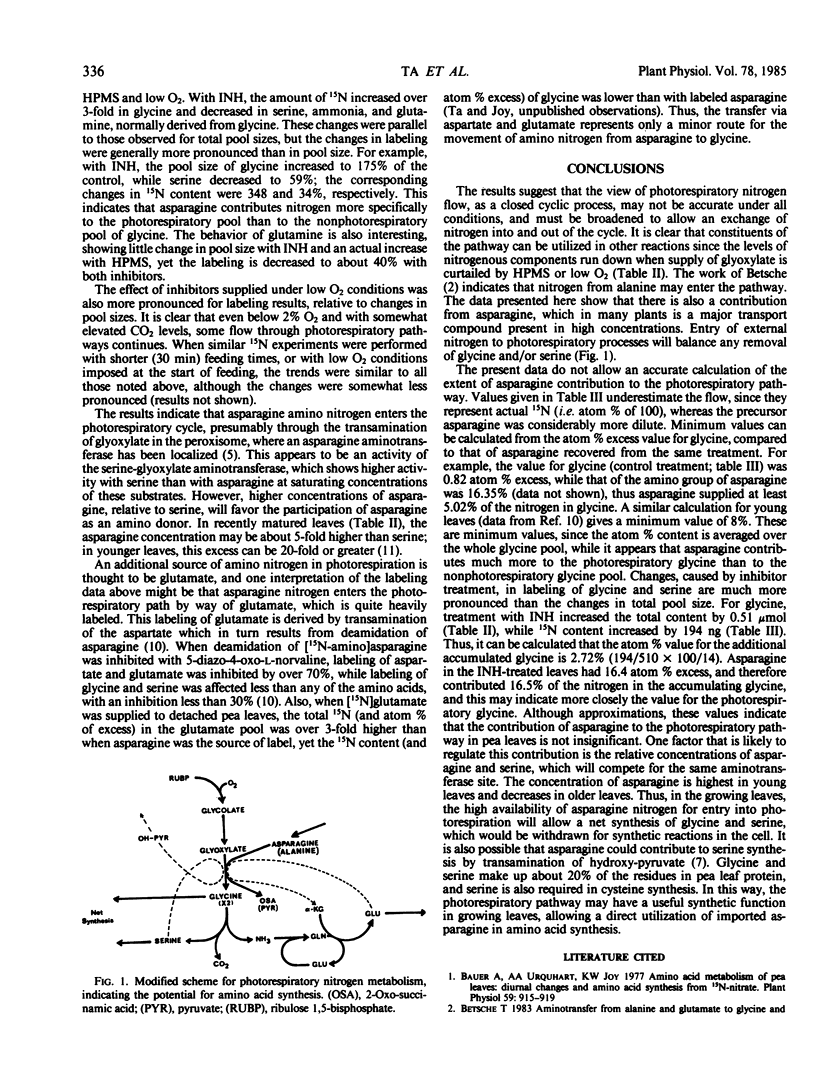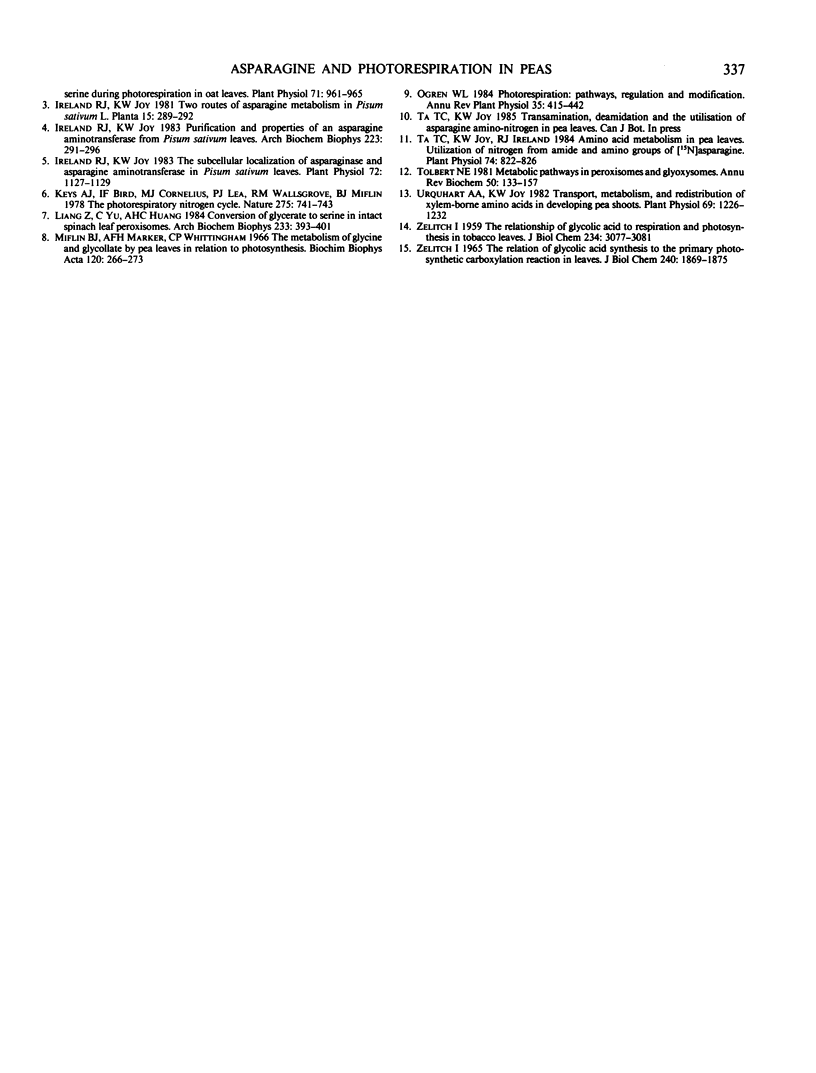Abstract
In pea leaves, much of the metabolism of imported asparagine is by transamination. This activity was previously shown to be localized in the peroxisomes, suggesting a possible connection between asparagine and photorespiratory nitrogen metabolism. This was investigated by examination of the transfer of 15N from the amino group of asparagine, supplied via the transpiration stream, in fully expanded pea leaves. Label was transferred to aspartate, glutamate, alanine, glycine, serine, ammonia, and glutamine (amide group). Under low oxygen (1.8%), or in the presence of α-hydroxy-2-pyridine methanesulfonic acid (an inhibitor of glycolate oxidase, a step in the photorespiratory formation of glyoxylate), there was a substantial (60-80%) decrease in transfer of label to glycine, serine, ammonia, and glutamine. Addition of isonicotinyl hydrazide (an inhibitor of formation of serine from glycine) caused a 70% decrease in transfer of asparagine amino nitrogen to serine, ammonia, and glutamine, while a 4-fold increase in labeling of glycine was observed. The results demonstrate the involvement of asparagine in photorespiration, and show that photorespiratory nitrogen metabolism is not a closed cyclic process.
Full text
PDF



Selected References
These references are in PubMed. This may not be the complete list of references from this article.
- Bauer A., Urquhart A. A., Joy K. W. Amino Acid metabolism of pea leaves: diurnal changes and amino Acid synthesis from N-nitrate. Plant Physiol. 1977 May;59(5):915–919. doi: 10.1104/pp.59.5.915. [DOI] [PMC free article] [PubMed] [Google Scholar]
- Betsche T. Aminotransfer from Alanine and Glutamate to Glycine and Serine during Photorespiration in Oat Leaves. Plant Physiol. 1983 Apr;71(4):961–965. doi: 10.1104/pp.71.4.961. [DOI] [PMC free article] [PubMed] [Google Scholar]
- Ireland R. J., Joy K. W. Purification and properties of an asparagine aminotransferase from Pisum sativum leaves. Arch Biochem Biophys. 1983 May;223(1):291–296. doi: 10.1016/0003-9861(83)90594-5. [DOI] [PubMed] [Google Scholar]
- Ireland R. J., Joy K. W. Subcellular Localization of Asparaginase and Asparagine Aminotransferase in Pisum sativum Leaves. Plant Physiol. 1983 Aug;72(4):1127–1129. doi: 10.1104/pp.72.4.1127. [DOI] [PMC free article] [PubMed] [Google Scholar]
- Liang Z., Yu C., Huang A. H. Conversion of glycerate to serine in intact spinach leaf peroxisomes. Arch Biochem Biophys. 1984 Sep;233(2):393–401. doi: 10.1016/0003-9861(84)90460-0. [DOI] [PubMed] [Google Scholar]
- Miflin B. J., Marker A. F., Whittingham C. P. The metabolism of glycine and glycollate by pea leaves in relation to photosynthesis. Biochim Biophys Acta. 1966 Jun 8;120(2):266–273. doi: 10.1016/0926-6585(66)90346-3. [DOI] [PubMed] [Google Scholar]
- Ta T. C., Joy K. W., Ireland R. J. Amino Acid metabolism in pea leaves : utilization of nitrogen from amide and amino groups of [N]asparagine. Plant Physiol. 1984 Apr;74(4):822–826. doi: 10.1104/pp.74.4.822. [DOI] [PMC free article] [PubMed] [Google Scholar]
- Tolbert N. E. Metabolic pathways in peroxisomes and glyoxysomes. Annu Rev Biochem. 1981;50:133–157. doi: 10.1146/annurev.bi.50.070181.001025. [DOI] [PubMed] [Google Scholar]
- Urquhart A. A., Joy K. W. Transport, metabolism, and redistribution of xylem-borne amino acids in developing pea shoots. Plant Physiol. 1982 May;69(5):1226–1232. doi: 10.1104/pp.69.5.1226. [DOI] [PMC free article] [PubMed] [Google Scholar]
- ZELITCH I. THE RELATION OF GLYCOLIC ACID SYNTHESIS TO THE PRIMARY PHOTOSYNTHETIC CARBOXYLATION REACTION IN LEAVES. J Biol Chem. 1965 May;240:1869–1876. [PubMed] [Google Scholar]
- ZELITCH I. The relationship of glycolic acid to respiration and photosynthesis in tobacco leaves. J Biol Chem. 1959 Dec;234:3077–3081. [PubMed] [Google Scholar]


